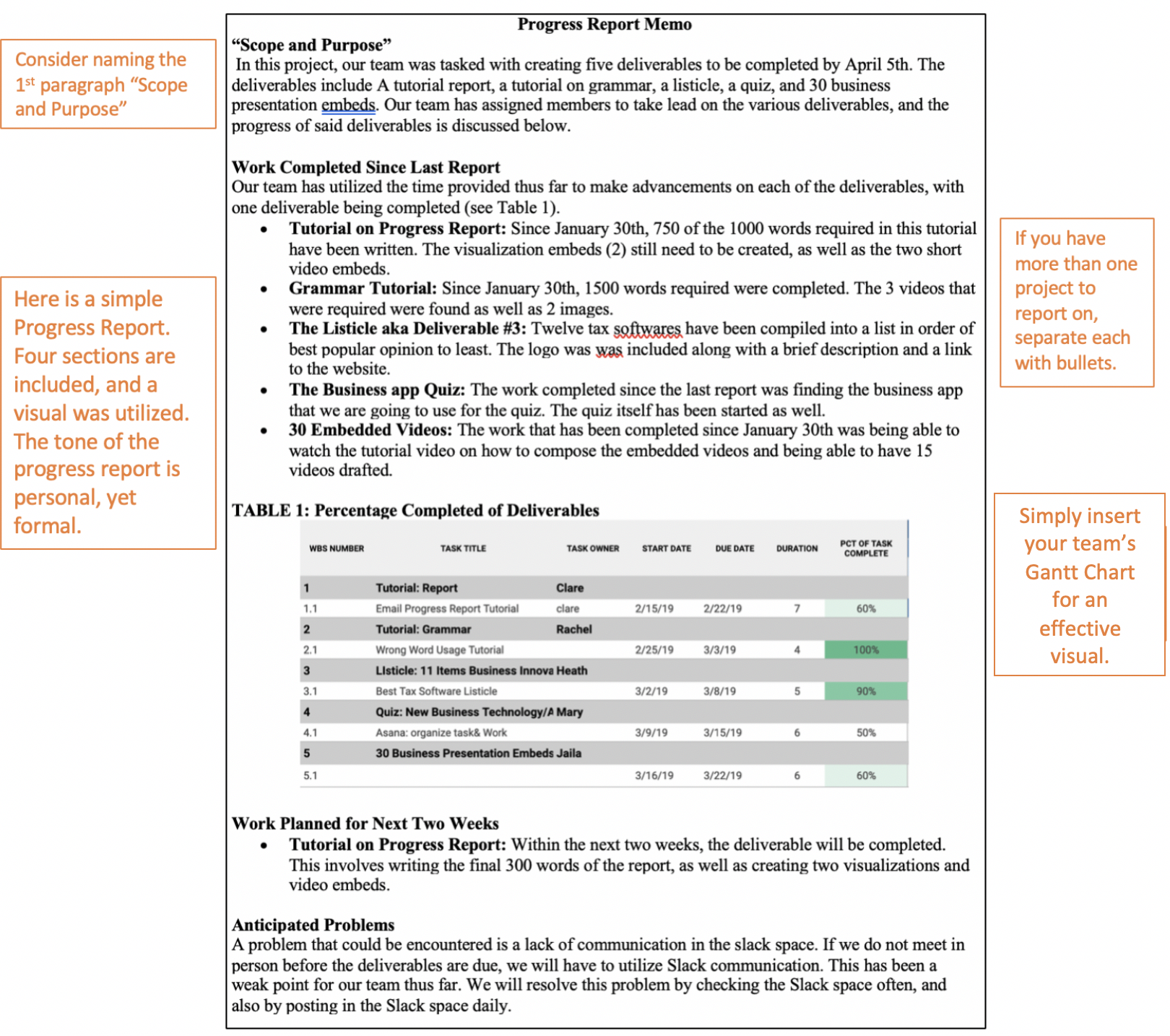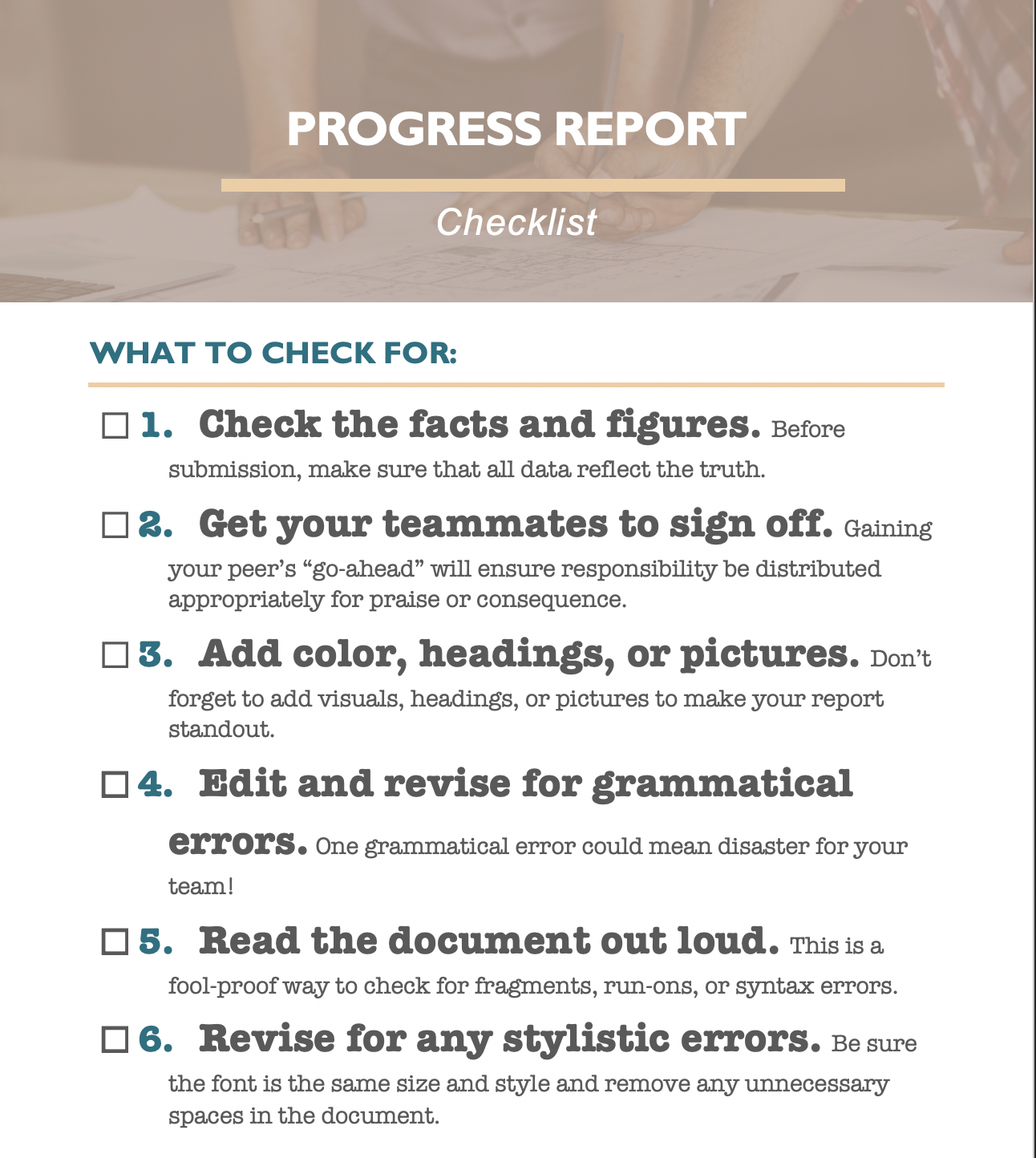Picture this: your team at work has been slaving over a long-term project for a month now. You have finally started to make real progress, and you think that you have some time to relax at work. Suddenly, your boss sends out a memo asking for a progress report to be on his desk by the end of the day. What do you do? You’ve never had to deliver a progress report before; you aren’t even sure the format this report assumes.
Lucky for you, this tutorial will remove any fear you have. In this tutorial, we will discuss the purpose of a progress report, as well as the format and content the report contains. There is no need to fret; this tutorial will provide you with the tools you need to compose a progress report that will blow the socks off your boss.
What is a progress report?
A progress report nothing more than a report that updates supervisors or clients on the status of a long-term project. A progress report can describe what has occurred within the quarter, month, week, or even day. The report should be concise, yet complete, and report on every aspect of the project as it moves toward completion. Topics included in the progress report can be:
- Work that has been completed
- Work that needs to be completed before the project is due
- Resources spent
- Unexpected problems
- Extraordinary instances
- Estimated time of completion
- Any other details concerning the project
How to write a progress report
- Analyze the situation and discover a purpose for your progress report. You will refer to this when constructing your report to ensure you stay on topic. This heavily depends on your audience and project at hand.
- Write a poignant header or subject (if it is in memo or email format). This should include the project name and the report title. It should also include the writer’s name and position, date of submission, and name and position of the recipient.
- Write the introduction. This should summarize the project and explicitly state the purpose of the project. It should briefly summarize the progress being made.
- Compose the body of the report. This should be the largest portion of the report. It should be styled with headings that report on tasks being completed, problems that have been encountered, and what has been done to solve them. This should provide detail about the task being completed.
- Include preliminary findings. This can take the form of tables, charts, and graphs. A colorful infographic may also be appealing to the audience.
- Discuss the plans for your project. Explicitly state an action plan for the future. This should include time needed to complete tasks and a prediction of future problems that may occur.
- Conclude with a summary of your progress report. This conclusion should contain only the key points that were discussed in the body of your report.
- Revise and edit your progress report. You want to ensure only the highest quality work is being delivered to your audience. Have another team member lay eyes on it before it is submitted as well.
Stylistic Keys and the Nitty Gritty
Now that you know the large components of your progress report, it is time to enter the nitty-gritty. What details could set your progress report apart from the mass of others that your boss will lay his eyes on? How can you stand out from the crowd? Here are a few reminders and tips to increase professionalism and create a report worth referring to.
- Remember to title the report “Progress Report” at the top of the page
- Your reader will not know what he/she is reading if you do not label the report. While this seems like an unnecessary topic to point out, without an appropriate title, your entire progress report may be in jeopardy.
- Consider titling your introduction paragraph, “Scope and Purpose” with an appropriate section heading style
- This will appropriately allude to the synopsis you are about to deliver over the project at hand. Be sure to include your team’s end objective.
- Ensure that the paragraphs are focal and short
- Be concise in your delivery and limit each section to a few paragraphs if possible.
- The tone for this report should be familiar and straightforward.
- You should be personable and attempt to connect with the receiver. No one wants to read a report that feels like a robot wrote it.
- BE HONEST
- You should be genuine in the report. Avoid being too self-deprecating, expectant, remorseful, cynical, or apologetic. Keep to the center of the emotion spectrum and your report will be professional.
- You should be genuine in the report. Avoid being too self-deprecating, expectant, remorseful, cynical, or apologetic. Keep to the center of the emotion spectrum and your report will be professional.
Visuals: How to Make Other’s Lives Easier
If after all of this you feel that your progress report is lacking, consider adding a visual. Visuals condense the information you are trying to present, and they make interpreting the information easier on the reader. A visual will definitely put your progress report above the bar. Here are some things to consider:
- Use the Gantt Chart
- If your team has already constructed a Gantt chart to divvy up tasks—simply copy and paste your Gantt chart into the progress report. Make sure that the progress is up to date, and you will be ready to go.
- Do not over-complicate the visual
- Because a visual’s purpose is to make the reader’s life easier, do not over-complicate the visual. This typically leads to a busy, confusing, and over-done graphic that should not be included in the progress report.
- Reference your graph in the text
- Don’t forget to draw your reader’s attention to the visual. Incorporate the graphic somewhere in the text, and then be sure to site it.
- Say good-bye to pie charts
- A pie chart’s composition makes it difficult to read. If you have two categories that are near-equal in intensity or measure, a pie chart will make it more difficult to distinguish between them.
In Conclusion…
If you follow these simple steps, you are sure to create a progress report that is deserving of your boss’s praise. There is no better way to reflect on your team’s progress concerning an important project than creating an outstanding Progress Report. Composing a complete progress report as a team is a unifying process. Defining what you have finished, and what needs to be done is a necessary part of project completion.




